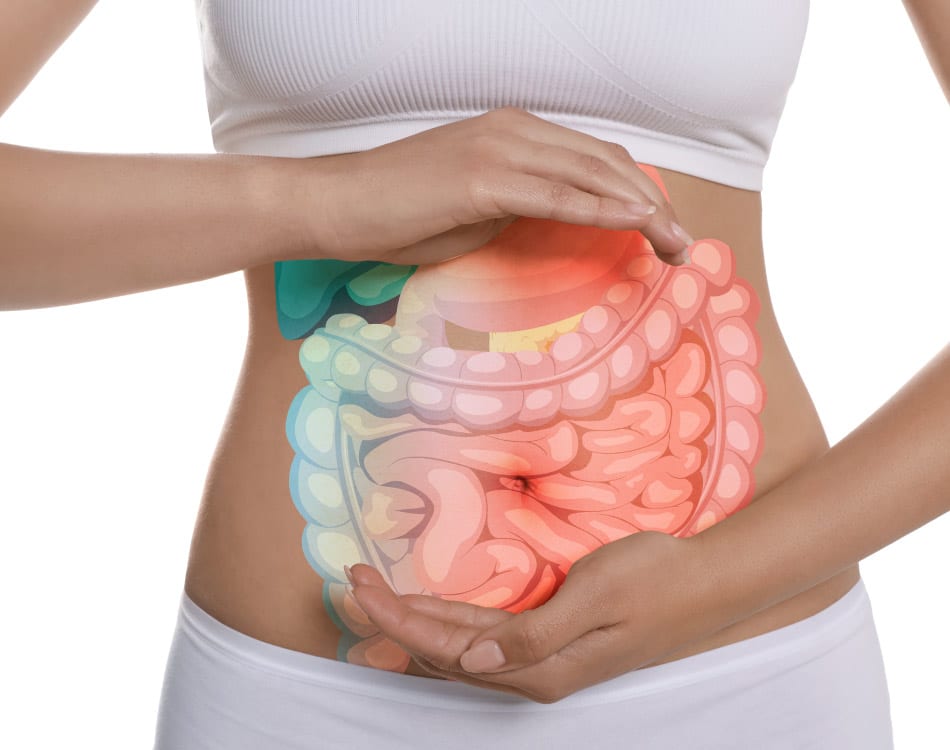Finding ways to boost your metabolism is the key to unlocking your body transformation potential and achieving the physique you want!
When you understand how you convert the food you eat into energy and how you can effectively burn that energy through exercise and regular activity, you gain the knowledge you need to reshape your body.
READ MORE | Avoid The Weight Rebound After Dieting
Your metabolism explained
Loosely described, your metabolism is the rate at which your body produces and burns energy from the food, drink and supplements we consume and from stored energy – fat tissue, carb-derived glycogen and amino acids from muscle.
A higher metabolism means you burn energy, ideally from fat cells, which helps you lose weight faster. A sluggish metabolism, on the other hand, can hamper your efforts to lose weight and burn fat effectively.
Various factors affect your metabolic rate, such as the amount of muscle you have, your daily activity levels, your diet, your lifestyle habits and your age.
Did you know? A study1 that analysed data from nearly 6,500 people ranging in age from infancy to elderly, found that resting metabolism holds steady from age 20 to 60 before decreasing at a rate of less than 1% per year. The findings, published in the journal Science, suggest that age is less of a factor in metabolic health than previously thought.
Creating a healthy metabolism that hums along by implementing these tips can help you achieve your physique goals and maintain your physique.
READ MORE | 5 Rules For Adding Muscle And Dropping Fat To Get Ripped
-
Fuel your metabolism properly
Your diet plays multiple roles in maintaining a healthy metabolism. It’s not only about the food we eat but also how much and when we eat that has an impact.
In terms of meal composition, a lower-carbohydrate diet with more protein and healthy fats seems to offer the best metabolic boost.
One study2 shows that protein-rich diets increase satiety and help maintain a leaner body mass overall, and also increase thermogenesis – the production of body heat due to natural bodily processes such as digestion.
Perhaps more importantly, eating protein is essential for building and repairing muscle, which boosts your resting metabolic rate because it is metabolically-active tissue.
It is also worth noting that eating whole food takes 46.8% more energy to digest on average than processed food, according to a 2010 study3 published in Food Nutrition Research.
Including more healthy fats in your diet, like omega-3 fatty acids, has a less indirect effect in metabolism.
Research4 published in the journal PloS One found that supplementing with omega-3 fatty acids for 12 weeks increased resting metabolic rates.
The total amount of calories you eat in a day will also impact your metabolism. Eat too much and you cannot burn everything efficiently, so you store any excess energy as fat, which is metabolically inactive tissue. Eat too little and your metabolism slows as a survival response to the perceived threat of starvation.
That is why it is important to create a sustainable calorie deficit. You need to consume enough nutrient-dense calories to meet your body’s resting (basal) metabolic requirements (BMR), but not so much that you exceed your active metabolic rate (AMR). A deficit of no more than 500 calories a day is ideal.
Lastly, meal frequency and timing – basically, when you eat – can impact your metabolism. For example, intermittent fasting can boost your metabolism to help you burn more fat and lose weight.
One study5 revealed that fasting for up to 48 hours can boost metabolism by up to 14%.
READ MORE | 7 Ways To Shed Belly Fat And Bust That Gut For A Ripped Six Pack
-
Spice up your diet
There are also certain foods that can enhance the metabolic effect of the food you eat. A study6 published in the journal Physiology and Behavior found that capsaicin, black pepper, ginger, mixed spices, green tea, black tea and caffeine all significantly impact metabolism.
Capsaicin, the compound found in hot red peppers, had the biggest impact on metabolism as it increased thermogenesis, energy expenditure and fat metabolism after a meal, which all helped to decrease overall body fat.
However, all these foods were found to increase thermogenesis, improve satiety and burn fat to some degree.
READ MORE | Supplement Dwindling Supplement Supplies With These Common Food Ingredients
-
Train to boost the calorie burn
When it comes to delivering the biggest metabolic effect from exercise, two forms of training stand out above all the rest – high-intensity interval training and weight training.
Various forms of HIIT not only burns more calories while you exercise but also keep your metabolism elevated for longer after your session has ended. This post-exercise rise in energy expenditure occurs as your body tries to recover and repair itself after training or strenuous activity.
This rise in metabolic activity can last for 48-72 hours after an exercise session, depending on its intensity and duration.
For this reason, HIIT is often recommended as a form of ‘metabolic conditioning’ and can take the form of intense cardio, interval or circuit-type weight training, or a combination.
Training with heavy weights is the other ideal approach to boosting your metabolism through exercise because it increases muscle mass, which is your most metabolically-active type of tissue. As such, the more muscle you carry, the more energy you burn throughout the day, even at rest.
READ MORE | Make The Right Choice, HIIT Or LSD?
-
Move more
Making movement part of your daily routine is an easy yet effective way to boost your metabolism.
Whether it is taking the stairs, walking the dog or playing outside with the kids, lots of little bouts of incidental activity add up to serious calories burnt over time.
According to Mayo Clinic researcher, Dr. James Levine, who first described non-exercise activity thermogenesis7 (NEAT) and continues to study it, this phenomenon can burn an extra 2,000 calories a day when comparing people of similar sizes.
Also known as non-exercise physical activity (NEPA), NEAT is a measure of the calories (energy) you burn simply living your life.
While these are usually classified as incidental activities that happen as part of the normal course of daily life, introducing more of them into your day as intentional activities can help to boost your metabolism.
Did you know? Researchers at the University of Texas at Austin8 determined that you need to take at least 8,500 steps per day – throughout the day, rather than all at once – to maintain adequate fat metabolism.
READ MORE | 5 Steps To A Slimmer Waist
-
Drink more water
Drinking more water may also briefly raise your metabolism. Research9 published in the Journal Clinical Endocrinology Metabolism showed that drinking 500 ml of water increased resting metabolism by 24% for about an hour.
READ MORE | Sweat Science: How Conventional Thinking Around Optimal Hydration Is Shifting
-
Get sufficient sleep – not too much, not too little
Research shows that sleep deprivation and reduced quality of sleep have a detrimental impact on your metabolism.
In a study10 published in the International Journal of Endocrinology that reviewed how sleep deprivation and sleep disorders may alter human metabolism, the researchers determined that the relationship of sleep duration to metabolic dysregulation is “found to be U-shaped in many studies”.
This finding suggests that both short duration and longer duration sleep may have the potential to disturb the body’s metabolic equilibrium.
References
- SCIENCE; 13 Aug 2021; Vol 373, Issue 6556l pp. 808-812l DOI: 10.1126/science.abe5017
- J Obes Metab Syndr. 2020 Sep 30; 29(3): 166–173. Published online 2020 Jul 23. doi: 10.7570/jomes20028
- Food Nutr Res. 2010; 54: 10.3402/fnr.v54i0.5144. Published online 2010 Jul 2. doi: 10.3402/fnr.v54i0.5144
- PLoS One. 2015; 10(12): e0144828. Published online 2015 Dec 17. doi: 10.1371/journal.pone.0144828
- Am J Clin Nutr. 2000 Jun;71(6):1511-5. doi: 10.1093/ajcn/71.6.1511.
- Physiol Behav. 2006 Aug 30;89(1):85-91. doi: 10.1016/j.physbeh.2006.01.027. Epub 2006 Mar 30.
- Best Pract Res Clin Endocrinol Metab. 2002 Dec;16(4):679-702. doi: 10.1053/beem.2002.0227.
- Med Sci Sports Exerc. 2021 Feb 1;53(2):333-340. doi: 10.1249/MSS.0000000000002486.
- J Clin Endorinol Metab. 2007 Aug;92(8):3334-7. doi: 10.1210/jc.2006-1438. Epub 2007 May 22.
- Int J Endocrinol. 2010; 2010: 270832. Published online 2010 Aug 2. doi: 10.1155/2010/270832















